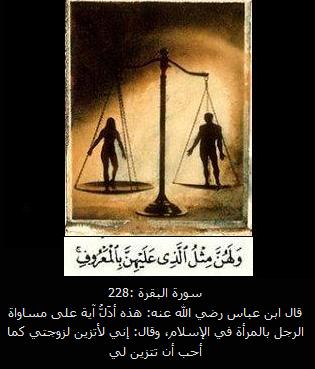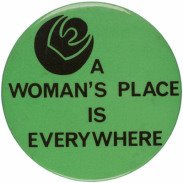Different Sieges of Different Types/Rules
It was supposed to be "sieges", but it was taken, tried "siegex" and got it working for me.
Siegex, or siege(x), where x is a variable, is supposed to mean that a siege (as a function) gets its value determined according to applying the value of x under the influence of the function itself, except that the function itself has a no definite or determined rule, i.e. it keeps changing, or, to put it better, the function "siege" takes different types of functions, i.e. different rules.
Let me put it mathematically, it might be easier to be understood than I explained above.
Suppose we have f(x) determined as follows:
f(x)= 2x+1
Now if, for example, x=2, then f(2)=5
if x=4, then f(4)=9
Suppose f(x) changed its rule, to be determined as follows:
f(x)=5x-3
now if, for example, x=2, then f(2)=7
and if x=4, then f(4)=17
We can see from the above that f(2) and f(4) had 2 different values for each, because f(x) was determined in 2 different ways, by 2 different rules.
Now let's drop the math and take an example from reality: "Hijabi girls (who cover their hair by wearing a head cover/the veil) wearing pants" was very much opposed to phenomena when it first started to be seen in the Jordanian society, or at least many families were against allowing their daughters to wear pants just because by culture it was known as a "3aib" for a girl to wear pants, while some other families believed that "Jilbab" is the only Islamic option for women clothing.
But then "the pants phenomena" started to spread more since girls of the "Intifada" were wearing pants because it made it easier for them to run faster after throwing stones when defending themselves against the Israeli settlers.
Seeing that on TV News broadcasts every once in a while made it more accepted in the eyes of some families, I guess. Also some families allowed it on the condition that those pants should fall within Islamic teachings about clothes we should wear, which should have 3 conditions:
1- Not tight.
2- Not transparent.
3- Does not attract attention.
Which is actually the right thing to follow when wearing whatever you're wearing if you're gonna go out of your house.
(Just like some scholars in Saudi Arabia, they were and some are still against this, yet now some say that a clothing that's known as "Bunjabi - I'm not sure of the name or the spelling of the name, but it is some kind of Pakistani women worn clothes" which has 2 pieces of clothes: a wide pant along with a medium to-the-knee long shirt, is O.K. to be worn by women)
But then by the vast spread of this custom - if I may call it so, or maybe because some families weren't that much giving attention to Islamic teachings about clothes, while they were more into (or maybe not much into) what goes on in the society, they did not care much about what their daughter wear as long as they have the headscarf covering their hair.
Add to that, different fashions of different pants - tight and non tight - were in the market and everybody used to pick whatever suits them, then in the following years, fashion in the markets started to follow very few patterns/designs that became less and less, till - just like now - you will find that all pants - and even shirts - in the market, are designed nearly with the same standards, which doesn't help girls to pick what suits their standards because it wasn't designed in the first place!

Now if you see a girl of those who wear pants with tight clothes while covering their heads with what they might call a Hijab, if you ask them, or tell them that that isn't right, you might hear them answering you with a sentence that falls within: All girls are wear clothes like the ones I wear.
Now you see? Different rules, and different restrictions, sometimes even what seems-to-look-like no restrictions at all! Which almost in all cases falls within a siege of some kind -- siege(x).


Putting all that together I meant the blog address to hint something like: "some siege of some type/kind", or, to put it in a more general way: "different sieges of different types/rules that gets determined according to different values/cases".
But who puts the rule for the siege, and who sets the value of x?
Well, usually its the people -- sadly said. Those people might be regular, or ordinary people, or they might be thinkers, or scholars. Might even be husbands, fathers, and brothers... and whoever else.
Those people almost all of the times are affected by cultures, be it anti or pro women. Cultures and common spread believes or thoughts about women - what they're capable of, what's best for them, what they're up to, and what they shouldn't be up to.. etc - and hence it affects the way they think, or interpret their own views and opinions, or religion's views and opinions, about women.
This is - mainly - what this blog is trying to highlight and talk about, simply put:
Different types of sieges that are wrongfully put around women with the claim that this is for the women's best interests and nature bla bla..
The blog also might talk - as much as it could - about Islam's point of view about women and how it gave them, and men too, freedom, according to what's best for humanity and societies, all in all.
And while were at it, this blog complains about the fact that when it's about women, there's almost always sieges - at least one - that are put around them, sieges that keep women from taking a step forward in the right direction, a direction that does not even contradict with Islam's teaching's about women, and the direction that they should follow.
This blog complains about the fact that "women's issues" are, by far, the most argued about, and disagreed upon issues by the above-mentioned-list of people, scholars included, world wide.

This blog complains about the fact that when all arguments about sieges put around women fall apart, they try sexism, it always sells, in this sexist (ruled and/or driven by) world and societies! But some of us realize that sexism is crap, and I - for one - ain't buying it!





















































